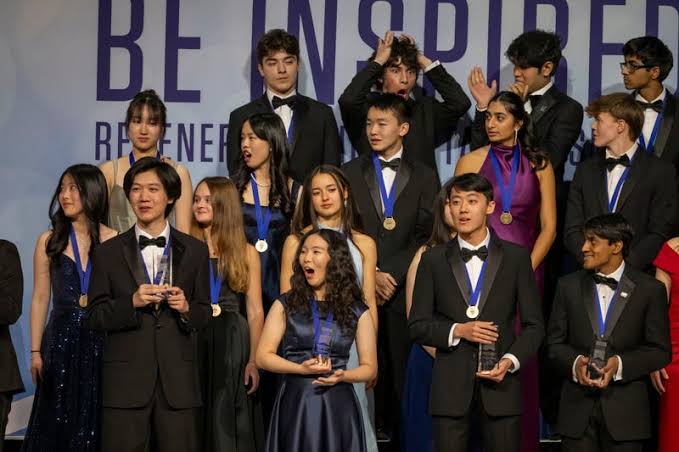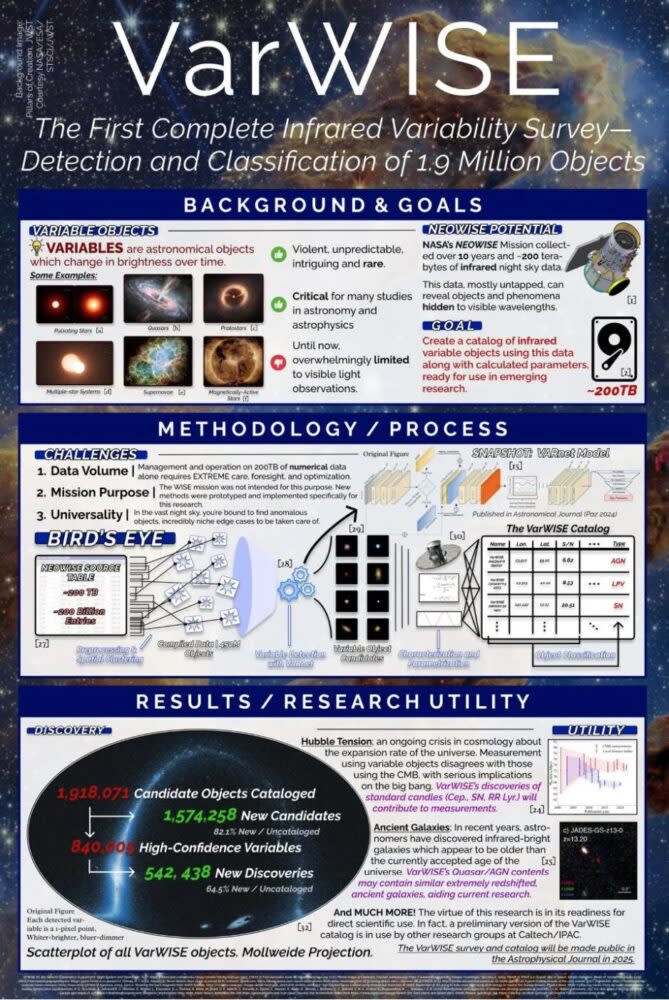
In an incredible mix of young talent, artificial intelligence, and ambitious goals in space exploration, 18-year-old Matteo Paz from Pasadena, California, has amazed the scientific community. He discovered 1.5 million previously unknown space objects, including black holes and supernovae, using a unique AI algorithm he developed himself. This remarkable achievement earned him the first-place award in the respected Regeneron Science Talent Search, along with a $250,000 prize. Matteo’s groundbreaking work may also help scientists solve a major mystery in cosmology: understanding how fast the universe is expanding.
Harnessing AI to Explore the Cosmos

During his time as an intern at the California Institute of Technology (Caltech), Paz faced an important challenge. He was tasked with examining a vast amount of data from NASA’s NEOWISE space telescope, which had gathered infrared data over ten years. The total data amounted to nearly 200 terabytes, which is an enormous amount of information. Traditionally, such a task would mean going through the data manually – an overwhelming job. However, Paz took a different approach. He developed a machine learning algorithm. This algorithm was a computer program specifically designed to handle large datasets and could analyze the information with impressive accuracy. This innovative solution made the process much more efficient.
“The very menial, tedious, dirty tasks that require a lot of time,” Paz said, recalling his internship’s early challenges. “So I automated it.”
The result? An AI system that classified space objects based on subtle fluctuations in infrared radiation, revealing a universe teeming with violent, variable phenomena.
The Scale of Discovery: 1.5 Million New Space Objects
Paz’s AI examined a massive collection of over 450 million objects in space. In this examination, it discovered 1.9 million objects that show changes over time, known as variable celestial bodies. Remarkably, 1.5 million of these had not been recorded before, making them entirely new discoveries for scientists. Among these discoveries are some very elusive and hard-to-find objects, such as:
- Supermassive black holes
- Double-star systems
- Distant supernovae
- Potential star-forming regions

Variable objects are celestial bodies whose brightness varies due to internal changes or influences from their surroundings. These brightness variations are crucial for scientists trying to understand cosmic events such as redshift, which is the change in light wavelength as objects move in space, and the expansion rates of the universe. A catalog of these variable objects, created by a scientist named Paz and called VarWISE, is already being used by researchers at Caltech for their studies. This catalog is also set to be published soon in the Astrophysical Journal, making it easier for more scientists to access and use this valuable information in their research.
Scientific Significance: Shedding Light on Cosmic Expansion
Paz’s research has broad and important effects. By looking at these high-energy and changing events, astronomers gather crucial information about the speed of the universe’s growth, which is a fundamental question in modern space science. There is an ongoing disagreement over two main methods of measuring the Hubble constant. This constant is important for understanding how fast the universe expands. The new information from the VarWISE catalog might offer new perspectives that could change the current debate and bring new insights into this critical topic in cosmology.
“It will either contribute to the resolution of a very contentious topic in current research, or it’s going to reveal something truly foundational about the origins of the universe,” Paz noted.
AI in Astronomy: A New Paradigm
Paz has come up with an AI innovation that is changing how we do astronomical surveys. Traditionally, these surveys relied heavily on manual classification methods or focused on small, specific areas. However, Paz has demonstrated that general-purpose AI can look through vast amounts of data and uncover patterns that humans might miss. His approach makes the process more efficient and comprehensive. Davy Kirkpatrick, who is Paz’s mentor at Caltech, highlighted the significance of this breakthrough.
“Prior to Matteo’s work, no one had tried to use the entire [200-billion-row] table to identify and classify all of the significant variability that was there.”
The algorithm itself was peer-reviewed and published in the Astronomical Journal in November 2024, establishing its scientific credibility.
From Black Holes to Wildfires: A Broader Vision
Paz stays practical even while studying space. Recently, he had a close call with a wildfire in Pasadena called the Eaton Fire. This event made him think about how infrared astronomy, usually used for studying stars and planets, could help us here on Earth. He is considering how this technology could be used to detect wildfires in real time from space, helping us respond more quickly to these dangerous fires.
This idea highlights how AI can be used for studying both space and our planet. It shows how mixing different fields can make AI very helpful in understanding the environment and the universe. By applying AI, we can gain new insights into climate change, natural disasters, and how space and Earth systems work together. This approach emphasizes the importance of technology in solving global challenges in both environmental and astronomical sciences.
What’s Next for Matteo Paz?
Paz was accepted into Stanford University, showing his academic future is extremely bright, just like the supernovae he discovered. Despite this achievement, he remains humble and spends a lot of time reflecting on his journey to get there.
“It really gives you a new perspective,” he said of narrowly escaping the wildfire. “I have a new appreciation for the problems that I have the privilege not to worry about.”
At present, he diligently improves his research and adds valuable information to an expanding collection of scientific knowledge. His efforts have the potential to transform how we perceive and understand the universe.
Key Takeaways
- Matteo Paz discovered 1.5 million new space objects using an AI model built during a high school internship.
- His work utilized data from NASA’s NEOWISE infrared sky survey (200 terabytes over 10 years).
- The catalog, VarWISE, is already being used in astronomical research and pending publication.
- His AI methodology was published in the Astronomical Journal, validating its scientific rigor.
- His discoveries could play a pivotal role in solving the Hubble tension, a major cosmological puzzle.
Sources
- Business Insider (2025). “An 18-year-old won $250,000 for discovering over a million objects in space.”
- NASA: NEOWISE Mission Overview. https://www.nasa.gov/mission_pages/neowise/main/index.html
- Astronomical Journal, Nov. 2024 Edition




